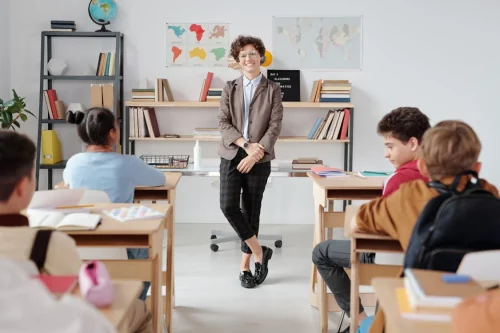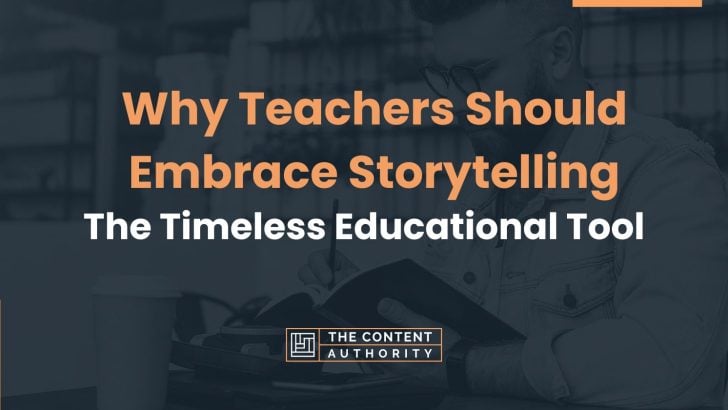Storytelling, an art as old as language itself, has been a cornerstone in human communication and culture. This ancient practice, which has seen countless firesides and starlit skies, holds a special significance in the field of education. It’s not merely a tool for entertainment but a potent educational strategy that teachers should embrace.
The Roots of Storytelling
To understand the power of storytelling in education, it’s essential to delve into its origins. Storytelling predates written language, serving as the primary means of preserving history, traditions, and values across generations. In ancient times, stories were more than entertainment; they were fundamental to survival, conveying crucial information about hunting, gathering, and social norms.

Over time, storytelling evolved into a sophisticated art form, used by sages, bards, and elders to educate and inspire. Nowadays, anyone from a marketer to a teacher can use a story maker online to connect with their audience in a unique way.
The Power of Storytelling in Education
In today’s classroom, the ancient art of storytelling can be a transformative force. It’s not just about narrating tales; it’s about connecting with students on a deeper level, engaging their minds and emotions. Here are the reasons why teachers should learn and apply storytelling:
1. Capturing Students’ Attention
One of the most profound advantages of storytelling in education is its ability to capture students’ attention and maintain their engagement throughout the lesson. Stories have an inherent allure that draws students in, making the subject matter more relatable and memorable. When a teacher tells a story, it piques curiosity, ignites imagination, and creates an emotional connection, making it easier for students to absorb and retain information.
2. Enhancing Memory and Understanding
Our brains are wired to remember stories. When information is presented within a narrative structure, it becomes more memorable and easier to recall. Teachers can leverage this natural cognitive advantage by incorporating storytelling into their lessons. Whether it’s a historical account, a scientific discovery, or a mathematical problem, presenting it as part of a compelling narrative can enhance students’ ability to remember and apply the information effectively.“
3. Building Empathy and Cultural Awareness
Stories possess the power to transport students into the lives and experiences of others, promoting empathy and cultural understanding. By sharing stories from diverse backgrounds and perspectives, teachers can broaden students’ horizons, helping them develop a more compassionate and inclusive worldview.
4. Encouraging Critical Thinking
Well-crafted stories frequently contain layers of meaning and moral dilemmas, encouraging students to think critically and analyze situations from various perspectives. Teachers can employ stories to stimulate discussions, provoke thoughtful questions, and promote critical thinking skills. Analyzing characters’ motivations, moral choices, and consequences in a story can lead to valuable classroom debates and insights.
5. Developing Communication Skills
Storytelling is an art of communication. Teachers who are adept storytellers model how to express ideas clearly, creatively, and persuasively. Students, in turn, learn these communication skills, which are essential in both academic and real-world contexts.
6. Easing into Complex Topics
Teachers often grapple with the challenge of conveying complex and abstract concepts to their students. Storytelling provides a bridge between the unfamiliar and the familiar.
By presenting information within a narrative framework, teachers can simplify intricate topics, making them more accessible and easier to understand. Stories create context, helping students relate new knowledge to their existing experiences and understanding.

7. Cultivating a Love for Learning
Perhaps the most significant benefit of storytelling is its ability to make learning enjoyable. When students are engaged and entertained, they develop a positive attitude towards learning, which can last a lifetime.
Becoming a Storytelling Educator
For teachers aspiring to become storytellers, here are some strategies:
- Understand Your Audience: Tailor stories to the age, background, and interests of your students. A good story for kindergarteners will differ vastly from one for high school students.
- Embrace Authenticity: Genuine storytelling resonates more. Share your experiences, or adapt stories in a way that reflects your unique voice.
- Incorporate Visuals and Emotions: Use visual aids, body language, and vocal variations to make your stories more vivid and engaging.
- Interactive Storytelling: Encourage students to participate, perhaps by predicting what happens next or by contributing elements to the story.
- Link Stories to the Curriculum: Integrate storytelling with your teaching objectives. Use stories to illustrate complex concepts or historical events.
In Conclusion
In a world where traditional teaching methods are often challenged by the distractions of modern technology, storytelling stands out as a timeless, effective educational tool. By harnessing the power of storytelling, teachers can transform their classrooms into vibrant, engaging, and deeply educational environments.
This ancient art, practiced by our ancestors under starlit skies, still holds profound relevance in today’s digital classrooms, reminding us that at the heart of education is the simple yet powerful act of sharing stories.

